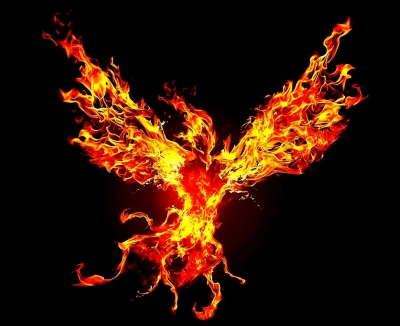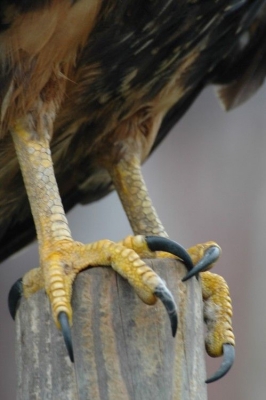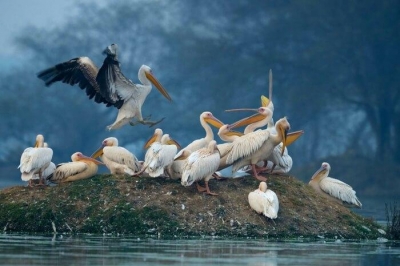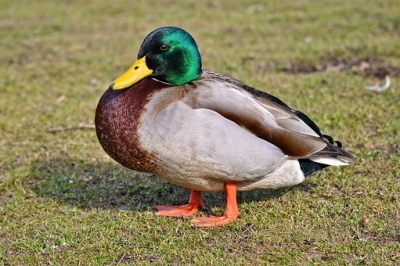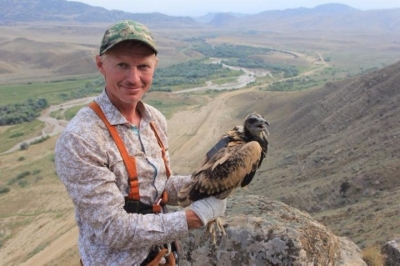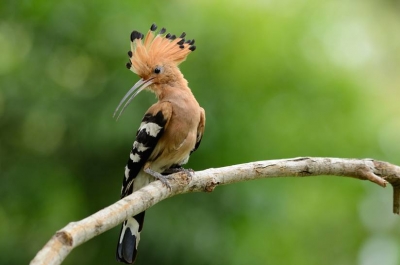
Ranjit Lal is one of my favourite nature writers. His essays on birds are like stories with lots of interesting anecdotes. His photographs that accompany the stories help us visualise his information. Read this paragraph about the hoo-poe.
“At first glane, most people tend to identify this bird as s woodpecker: like many woodies, it has a crest, a long bill and a zebra-striped plumage. But woodpeckers are normally seen travelling vertically up a tree bark, drumming, pausing and picking up insects. This one, dressed in raw silk colours – with a black-and-white-tripped crest, zebra-striped back and wings, waddles around on the ground, industriously inserting its long down-curving forces-like bill into the earth.... Welcome to the onomatopoeic Hoopoe: a bird whose deep, hollow- sounding “Hoo-po, hoo-po-po” call echoes repeatedly like a ventriloquist.”
Here is the information from his essay.
Where are hoopoes found?
Hoopoes are found in Africa, Europe and central Asia, and, in India. They migrate, but they also stay put in one place. The first Everest expedition reported seeing them at an altitude of 21,000 feet.
How long have we known them?
King Solomon was a wise king. According to legend, birds flew all the way to Africa, telling everyone, “King Solomon is the wisest man in the world!” Queen of Sheba, in Africa, heard it. She decided to visit King Solomon and test his wisdom. She challenged him to build a palace made of bird beaks. Solomon accepted it and ordered the birds to donate their beaks. All the birds did, except the hoopo. “Why not?” asked Solomon. The bird wanted the king to answer three riddles. He answered them correctly, but while doing so, he realised that Queen Sheba’s demand was unreasonable. Why didn’t he consult the birds before giving his command? He explained this to Sheba, who too appreciated the bird’s argument. Together they rewarded the hoopo with a golden crown, which it wears even today. There was also story of the bird being tardy in bringing news of enemy activity. To the angry king the hoopo said it was delayed by what he saw in Sheba. The king sent a message to Sheba and the story had a happy ending.
Do people eat it?
Some do, because they believe its body parts can cure ailments. But a lot of people don’t because of the bird’s association with King Solomon. Egyptians are believed to have worshipped them.
What does the bird eat?
Hoopoes are mainly insectivorous, says Ranjit Lal. They dig the soil with their bills, and look for grasshoppers, worms and beetle-larvae. That means they are farmers’ friends since they eat up harmful insects. They also add berries to their diet. We should not spray the fields and gardens with chemicals since this poisons the hoopoe chicks.
Their behaviour
Hoopoes have a crazy side to their nature, says Lal. Salim Ali has pointed out how groups of hoopoes – maybe three or four birds – suddenly fly up and around in the air as if they have gone mad. They flit and flutter from branch to branch like butterflies, with their crests and tail wide open. No one has been able to explain this “wild side” of the birds!
Hoopoes are also big fighters. During the breeding season (between March and June), fights erupt when they try to guard their ground areas. The birds face each other, “crests flared, bills first pointing downwards and then directly” and begin jabbing. Sometimes the birds blind one another in their fights. The fight is generally over a hollow or slit in a tree trunk or a hole in a stone wall – this is where the birds breed. Hoopoes line the chosen one with grass, leaves, feathers and rubbish and the female settles in to lay eggs, which are bluish-green and speckled. The entrance is kept very small to protect the female sitting on the eggs hatch. Once the chicks come out, both parents feed them.
Hoopoes are not clean birds. The female hoopoe leaves her poop and food bits rot in the nesting area. She also lets out a thick, brown, foul-smelling body liquid, which she smears all over herself and the eggs. This “guck” keeps predators (Larger birds) away, the sebum in it helps to make the feathers flexible and water-proof, and the good bacteria present in it fights harmful germs. The goo else percolates the egg-shell and provides a shield for the babies inside. The hoopoe mom will squirt this stinking liquid with full force at anymore (or anything) trying to take her eggs away.
Picture Credit : Google
